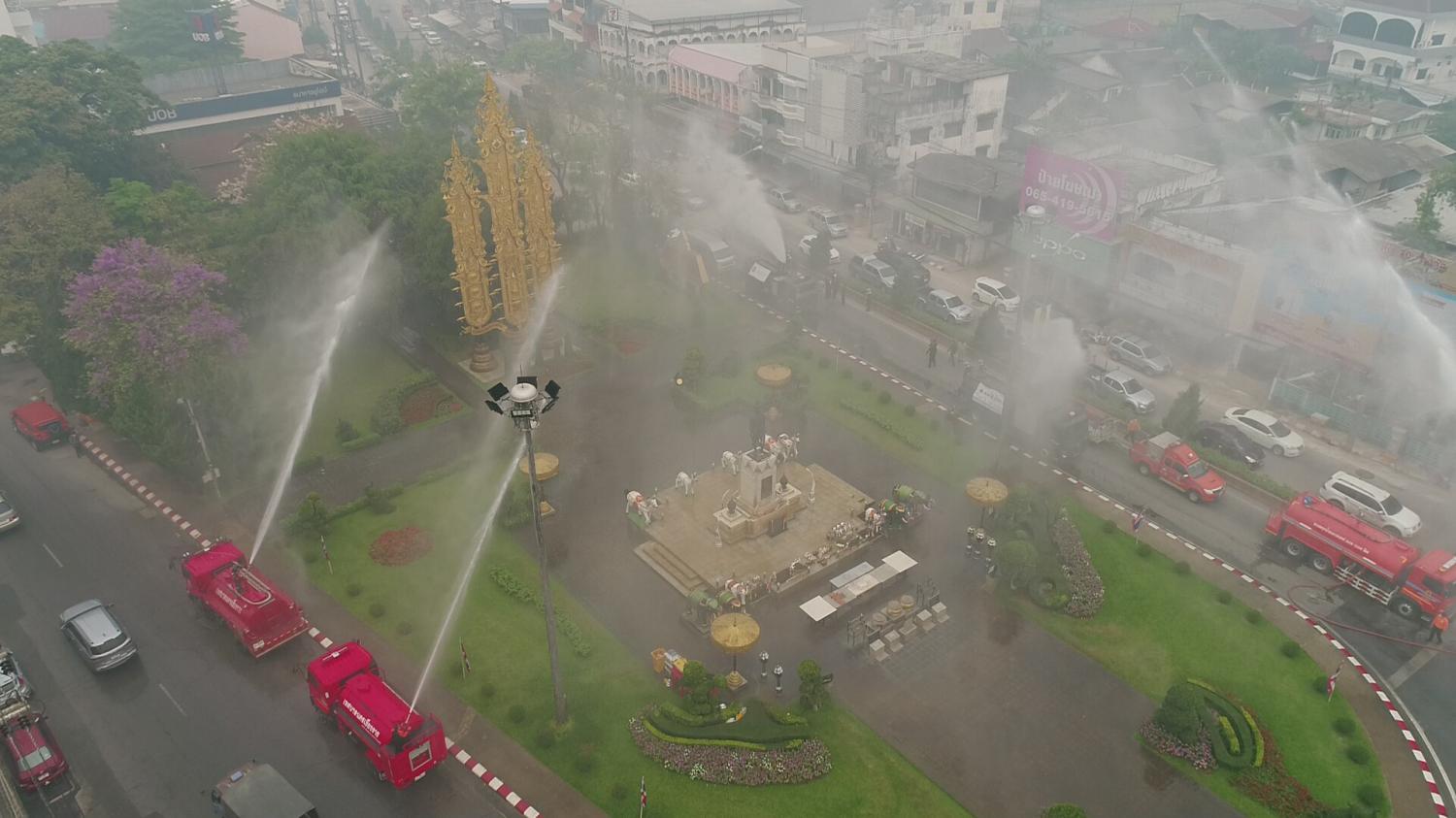
PM2.5 has become a major environmental and health problem in Southeast Asia. To deal with the issue, members of the Association of Southeast Asian Nations (Asean) have put in place PM2.5 standards to measure air quality. These countries usually use the World Health Organization's guidelines on PM2.5.
Under the WHO's guidelines, the average annual concentration of PM2.5 particles should not exceed 5 microgrammes per cubic metre (µg/m3), while over a 24-hour period, the concentration should not exceed 15µg/m3.
The WHO's PM2.5 standard is known as the gold standard, and it's hard to follow. Therefore, countries revise the threshold to suit the reality on the ground. Within Asean, for instance, the daily PM2.5 standard varies from 10µg/m3 to 65µg/m3 — very different from the WHO's gold standard that permits only a small amount of PM2.5 in the air.
Last year, Thailand's National Environmental Board announced a more stringent standard for air pollution. Under this, the concentration of PM2.5 in the atmosphere must remain below 37.5µg/m3 over a 24-hour period, or 15µg/m3 annually, to be considered healthy.
In short, the new PM2.5 standard in Thailand has created more alarm in society. Despite the amount of pollution remaining the same, the Pollution Control Department recently declared most parts of Bangkok as having seriously bad air quality. In the past, the alarm bell was raised when the PM2.5 level exceeded 50 µg/m3.
So with the new 37.5 µg/m3 daily threshold, Chiang Mai would have bad air quality for over 80 days a year, including for stretches of eight consecutive days. Under the more stringent standard, "bad air quality" will be 1.5 times higher than the old benchmark.
Urban haze in big cities or metropolises like Bangkok and its vicinity comes from various activities.
The haze in cities is caused by pollutants emitted from various sources — diesel vehicles, factories, and sometimes, the haze comes from individuals who set fires to burn waste. With the new daily 37.5 µg/m3 threshold, Bangkok would see 30 bad-air days per year, as opposed to 10 days under the old standard.
One of the problems that prevent Thai policymakers from solving the PM2.5 problem is the data they use to analyse problems and form solutions.
First of all, local officials use three sets of data — relating to the weather, geography, and the amount of air pollution — to calculate the intensity of PM2.5 levels.

Municipal staff in Chiang Rai province spray water to reduce PM2.5 on March 27. (Photo: Chiang Rai Public Relations Office)
The weather also plays a crucial role in causing PM2.5 haze. It is just common sense that rain and humidity will reduce forest fires as the water and humidity make forests, which provide fuel for such fires, moist and hard to ignite and spread. More rain and water resources always result in better air quality.
Geography also plays a role. Mountain-valley and highland features cause poor air ventilation, and in turn, haze can build up easily. Big cities also have features that block good ventilation.
What has been missing for environmental policymakers is one parameter known as the "airshed". This is an area-based way of assessing air pollution. Under this parameter, PM2.5 is influenced by both weather patterns and emissions confined to a certain area or region.
In that airshed, the local topography and weather conditions limit the dispersion of pollutants to other places. Airshed takes a bigger picture view of PM2.5 rather than being confined to a specific location or province.
For example, the Lower Mekong airshed covers northern Thailand, eastern Myanmar and northern Laos. Bangkok's airshed covers the lower part of central Thailand. Once an airshed is defined, relevant data (pollutant levels, weather, emissions or source activity, and so on) can be recorded and updated accordingly.
With corresponding airshed-related data, policymakers can prescribe appropriate measures and mobilise resources accordingly instead of treating PM2.5 as a form of general pollution, meriting a uniform solution.
But in Thailand, policymakers still look at PM2.5 as a city problem instead of looking at larger areas.
For example, policymakers look at PM2.5 in Bangkok as the result of emissions from diesel engines. If they take the airshed approach, however, Bangkok would encompass a larger area, including Saraburi province and the Eastern Seaboard.
There would be more sources of PM2.5, such as factories in Samut Prakan or on the Eastern Seaboard or from open burning on sugar cane plantations in Suphan Buri or Ratchaburi provinces.
Smoke from factories and farms is transboundary in nature and, from time to time, is blown over to Bangkok. But the government just focuses on spraying water or checking old diesel cars.
Thai policymakers must use quality science. Instead of mixing up data, the environment ministry should exclude the weather as a factor and focus more on analysing PM2.5 data based on the airshed.
The US Environmental Protection Agency and the European Environment Agency have used area-based analysis to measure air pollution. Many techniques have been developed for the so-called weather adjustment, ranging from data-driven (statistical and machine/deep learning) models to sophisticated scientific models.
Under the new PM2.5 standard, policymakers must formulate solutions by referring to more precise and better data.
Kasemsan Manomaiphiboon, Associate Professor, is a lecturer at The Joint Graduate School of Energy and Environment, King Mongkut's University of Technology Thonburi, and a researcher at the Center for Clean Air Solutions, Thai Health Promotion Foundation.